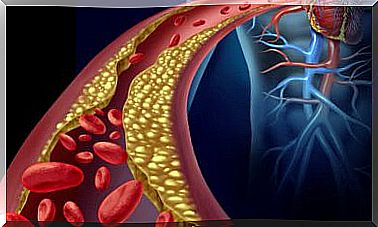Symptoms And Treatment Of Neck Pain
Neck pain sometimes appears simply due to poor posture or aging. Other times it is lesions or certain diseases of the spine. If neck pain persists for more than a week, it is advisable to see a doctor.

Neck pain is pain that occurs in the neck region and areas of the back of the neck. In most countries of the world, it comes second in the list of pain associated with the spine, after back pain in the lumbar region.
The cervical area is the most mobile region of the entire spine. It is also one of the most flexible. This then makes this area more exposed to wear, damage or overwork. These are factors that cause neck pain in particular.
In most cases, neck pain is not a serious condition. It generally responds perfectly to conventional treatments and does not cause sequelae. It is indeed rare for the symptoms to worsen and be associated with a more serious health problem.
What is neck pain?
Neck pain is what is more commonly known as “neck pain”. Sometimes it corresponds to pain localized only in the neck. But, often it extends to the head, shoulders or arms. It can cause neck pain, tingling, and numbness in the fingers of the hand. Even dizziness and nausea.
On the other hand, this pain can vary in intensity, ranging from mild discomfort to a crippling sensation. Neck pain is more common in people over 40 and affects up to 50% of people over 60.
Concretely, we distinguish two types of neck pain:
- Acute. Better known as torticollis. It is characterized by its sudden onset and is the result of muscle contracture. The symptoms disappear in the short term.
- Chronic. In chronic neck pain, the pain persists for several weeks. It is estimated that 10% of the adult population suffers from it.

Causes of neck pain
Most often neck pain occurs due to muscle overload or nerve damage. These two factors can, in turn, have several causes. What are they ?
- Muscular origin. It occurs in case of overload, continuous strain, fatigue or contracture of the cervical muscles. Trauma also causes neck pain of muscle origin. If the cause persists, it is possible that the intervertebral discs are damaged, as well as the vertebrae or nerves.
- Cause of nervous origin. It occurs following an injury to the intervertebral vertebrae which results in pinching of the nerve. Trauma, rheumatic diseases or aging contribute to it. They can also lead to the development of a herniated disc.
In addition, certain diseases can also trigger neck pain. The most frequent are: pathologies of the cervical intervertebral disc, cervical stenosis, osteoarthritis and trauma. And more precisely the “neck of the rabbit”.
Symptoms
Obviously, the main symptom of neck pain is pain in the neck. The neck is generally stiff and one experiences discomfort when moving. However, other symptoms may also appear:
- Headache
- Feeling tired or weak
- Nausea and vomiting
- Fever
- Visual disturbances
- Dizziness
- Ringing in the ears
- Tingling in the shoulders and hands
If the pain is very intense, whether it occurs after a stroke or is accompanied by fever or dizziness, it is strongly recommended that you consult a doctor promptly. He will perform an eye and manual examination to assess the mobility of the cervical spine and the functioning of muscles and joints.
Usually he will also ask for an x-ray and a blood test. In some cases, it is necessary to perform a CT scan or MRI. In addition, a lumbar puncture may sometimes be required if meningitis is suspected.

Treatment
To treat neck pain, in principle conservative physiotherapy treatment is used. The latter improves cervical mobility and generates relaxation. Normally this includes neck massages, as well as application of heat to the affected area. Pressure showers are recommended on the neck and shoulders when you wake up.
In addition, the physiotherapist often indicates a set of exercises and specific recommendations on postural hygiene. In some cases, mild medications such as anti-inflammatories, pain relievers, or muscle relaxers are used to relieve pain.
Finally, the most severe cases require surgery to treat the pain. Sometimes the goal is to stabilize the spine when the source of the pain is trauma. Other times, the goal will be to reduce the pressure on the spinal cord or nerve roots.









